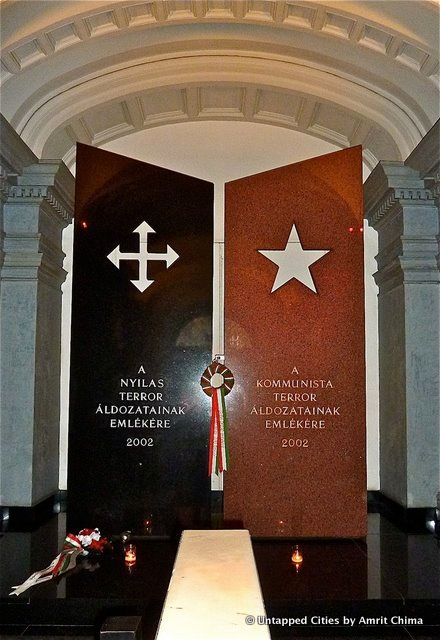Last Chance to Catch NYC's Holiday Notalgia Train
We met the voices of the NYC subway on our nostalgia ride this weekend!


Andrássy Út 60. In 1944, this Neo-Renaissance corner address along one of Budapest’s main thoroughfares became the headquarters of the Hungarian Nazis. In the dark and dank basement of what was once a warm and dignified apartment building, members of the Arrow Party, loyal to a weakened and nearly overthrown Hitler, tortured and killed in the Führer’s name.
In 1945, Soviet tanks grumbled and clanked through Budapest, freeing Hungary from Nazi dictatorship. But joy at their arrival was short-lived. The Russians quickly flattened the already traumatized country under the heel of red communist fear, settling themselves comfortably in Andrássy Út 60 and making good use of the torture and death chambers below ground. The building remained their headquarters until 1956. Today, the complex is called Terror Háza. House of Terror.
Terror Háza is permanently etched in Budapest family histories. So many disappeared, sometimes discovered—months, even years later—still within the boundaries of the city, concealed underground, as happened to my husband Daniel’s great-grandfather.
The Russians seized his great-grandfather under the pretense of treason. In actuality, he was a renowned watchmaker and had in his possession a sizeable fortune in gold. Confiscating his wealth, officers then hauled him to one of the many interrogation rooms within Andrássy Út 60 where he remained for some time, abused and malnourished, once beaten so badly he was unable to recognize his daughter when she visited. During his stretch in prison, either by request or clandestinely, he procured a spoon, using the metal to shape into a ring. It was 1952, the year Daniel’s mother Judit was born. The metal had no monetary value, but it was the only gift the watchmaker could manage, a small but impressive acknowledgement of the birth of his granddaughter. I asked to see the ring, but Judit sadly shook her head. It was lost many years ago.
The hallways of Andrássy Út 60 are now a museum showcasing the horrors of back-to-back dictatorships, providing yet another grain of insight into the Hungarian psyche. People here are still angry about these relatively recent events. And now major corporations have set giant feet down in Budapest, offering low salaries despite a major rise in cost of living. Perhaps it’s not a dictatorship, but it’s an oppression of sorts.
 Monuments somberly greet visitors to the House of Terror. Left: In memory of the victims of Arrow Party Terror. Right: In memory of the victims of communist terror.
Monuments somberly greet visitors to the House of Terror. Left: In memory of the victims of Arrow Party Terror. Right: In memory of the victims of communist terror.
The average monthly net income ranges from $600 to $900 dollars, yet typical monthly bills include: $350 in rent, $175 in utilities, $50 for a basic cell package of 200 minutes, and $50 for a tram pass, or—if buying a car is possible—there are car costs (tax, insurance, and $8 per gallon of fuel). Never mind miscellaneous expenses or supporting children. Forget electronics. It’s twice the price as in the States. And that IKEA couch we get on deal in the U.S.—that starts at $1000 in Hungary.
Making a purchase here is not a flippant event. In the United States, sales are plentiful, and we are armed with receipts that detail stores’ return policies on the back. We confidently buy at will and we often don’t consider the need for things too thoroughly or the implications on our bank accounts—particularly if we pay with credit cards. I like that in Hungary I’m challenged to be prudent. People think differently in Hungary because of their history, because of what they continue to endure. They’re smart, resourceful people. I hope it rubs off.
Subscribe to our newsletter